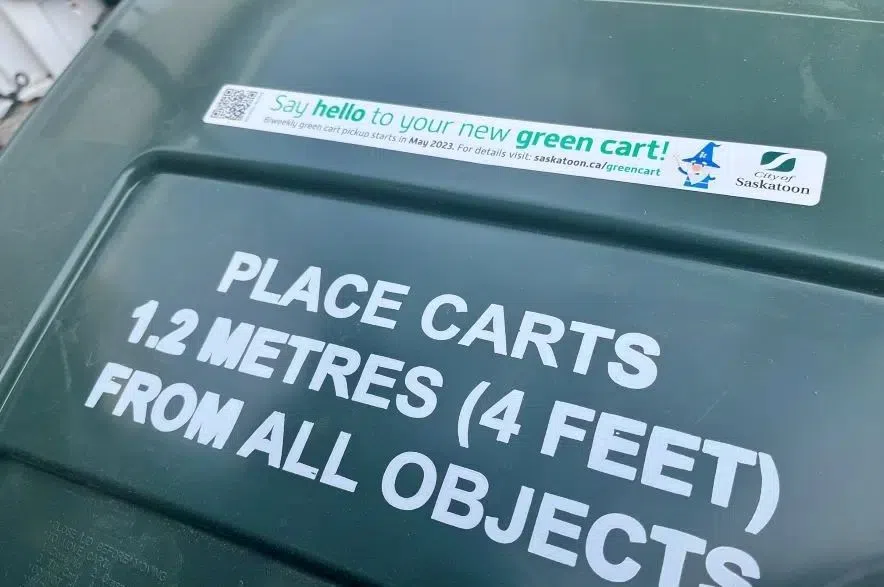Saskatoon city council is taking the next step to building its own organics processing facility.
On Wednesday, council voted 6-5 in favour of going ahead with a motion to build a 40,000-tonne capacity facility that could accommodate the city’s current needs and estimated future capacity when it comes to processing organics.
The city wants to move on from its contract with Loraas, which it says will help reduce costs.
The anticipated cost to build the facility is $22.1 million, and it would be located south of the current landfill. The land where the facility would be built is already owned by the city.
Administration suggested that approving the project will bring long-term price stability to utilities, as utility processing costs will be city controlled as opposed to if they continued to run operations through a third-party processor.
Administration also estimated the curbside organics program would be charged $2.5 million for organics processing in 2026.
The costs would be funded through utility fees charged to residents. Based on the suggested tonnes and inflationary increases, assuming there is a 1.5 to two per cent increase in costs, the five-year processing cost paid to the city compost depot would be approximately $12.7 million.
When the facility is built in 2026, administration projected the processing costs for a cart per month would be nearly $1 less than if those services were provided by a third-party processor.
By 2030, the city estimates its rate will be $1.53 cheaper than that of third-party companies.
When it comes to the estimated utility rate and the cost per cart per month, it anticipates the cost for users would be $8.32 per month as opposed to $9.20 per month. By 2030, the costs for using a third party would be $10.05 per month as opposed to the $8.52 projection for the city-run facility.
Coun. Mairin Loewen voted in favour of the motion at council and suggested from the data council received, this will save the city millions down the road.
“What the analysis tells us is that Option 3 is likely to save us $1.5 million per year for Saskatoon residents. I can’t recall a time where we’ve presented an option where we can save residents $1.5 million per year,” she said during Wednesday’s council meeting.
Changes to intersection of Wiggins Avenue and College Drive
Changes are coming to the intersection of Wiggins Avenue and College Drive between Elliott Street nearly a year after cyclist Natasha Fox was killed while riding her bike with her two young children travelling behind her.
For the past year, Tod Fox has been advocating for the city to make the intersection safer after her wife was hit by a cement truck while cycling.
Council approved for the administration to continue implementing 11 out of 14 recommendations from a road safety audit for the intersection, which suggests changes to traffic signals, adjusting signage and adding accessible curb ramps.
Councillors also voted to include an additional recommendation for bike box pavement markings “to clearly establish cyclist right-of-way approaching the intersection and reduce the possibility of right-hook collisions.”
Support for the motion was unanimous among councillors.
“I think we need to try this out,” Mayor Charlie Clark said. “I believe that it is worth doing having gone through that intersection as a vehicle, pedestrian and a cyclist. This is the highest-used intersection (for bikes) and it’s not working right now and we have to do something.”
Coun. Cynthia Block acknowledged that there isn’t a perfect solution, but she felt staying put is something the city couldn’t do.
“It’s important that we do something. What occurred today is that regardless of what we do at Munroe Avenue, the main entrance into the university is going to be at Wiggins,” she said.
“I’ve learned over the years that cyclists will always take the most direct route they can to get where they need to go. I think we owe it to Natasha and her family and all of the cyclists in this community who have been begging us for better safety to move forward with this option.”
Design work on the project still needs to be completed before it’s officially implemented.
Editor’s note: A previous version of this article contained incomplete information about the approved recommendations from the road safety audit.











